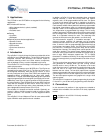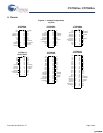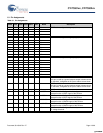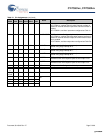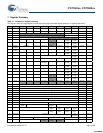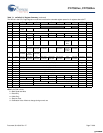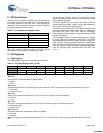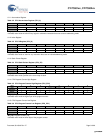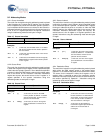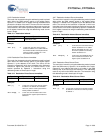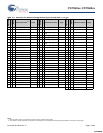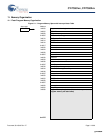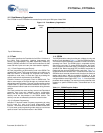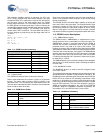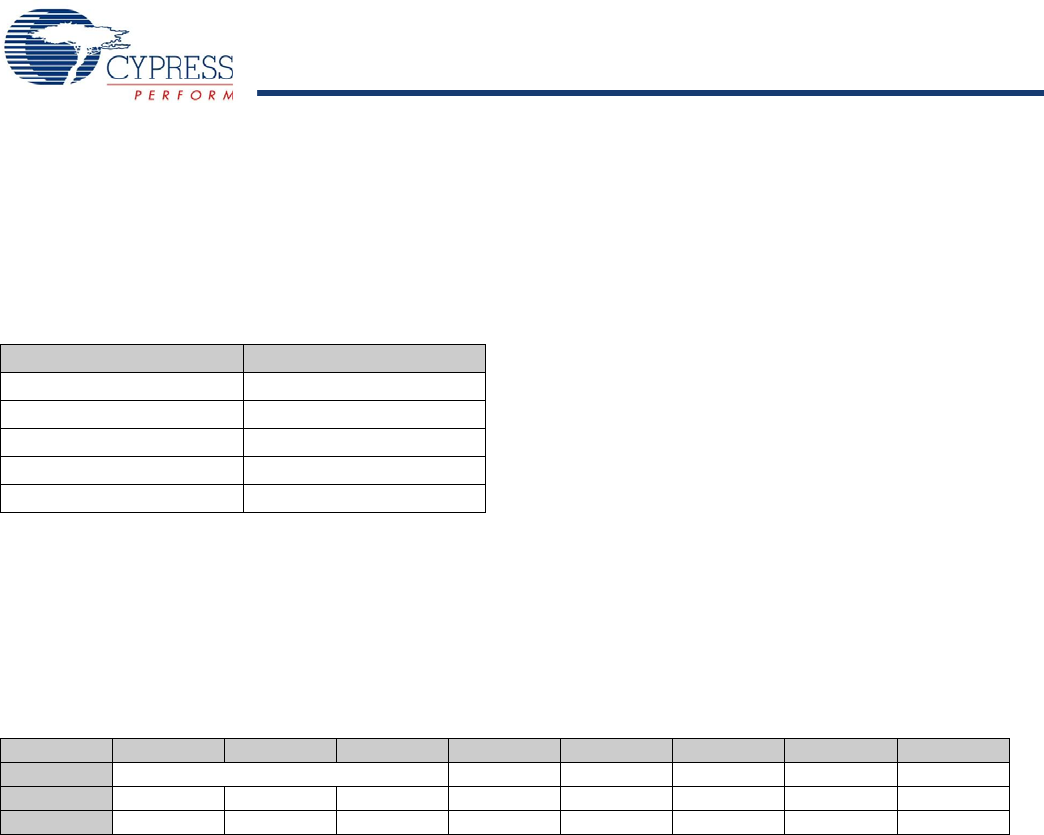
CY7C601xx, CY7C602xx
Document 38-16016 Rev. *E Page 8 of 68
8. CPU Architecture
This family of microcontrollers is based on a high performance,
8-bit, Harvard architecture microprocessor. Five registers control
the primary operation of the CPU core. These registers are
affected by various instructions, but are not directly accessible
through the register space by the user.
The 16-bit Program Counter Register (CPU_PC) directly
addresses the full 8 Kbytes of program memory space.
The Accumulator Register (CPU_A) is the general purpose
register that holds results of instructions that specify any of the
source addressing modes.
The Index Register (CPU_X) holds an offset value used in the
indexed addressing modes. Typically, this is used to address a
block of data within the data memory space.
The Stack Pointer Register (CPU_SP) holds the address of the
current top-of-stack in the data memory space. It is affected by
the PUSH, POP, LCALL, CALL, RETI, and RET instructions,
which manage the software stack. It is also affected by the SWAP
and ADD instructions.
The Flag Register (CPU_F) has three status bits: Zero Flag bit
[1]; Carry Flag bit [2]; Supervisory State bit [3]. The Global
Interrupt Enable bit [0] is used to globally enable or disable inter-
rupts. The user cannot manipulate the Supervisory State status
bit [3]. The flags are affected by arithmetic, logic, and shift opera-
tions. The manner in which each flag is changed is dependent
upon the instruction being executed (AND, OR, XOR). See
Table 10-1.
9. CPU Registers
9.1 Flags Register
The Flags Register is only set or reset with logical instruction.
Table 8-1. CPU Registers and Register Name
Register Register Name
Flags CPU_F
Program Counter CPU_PC
Accumulator CPU_A
Stack Pointer CPU_SP
Index CPU_X
Table 9-1. CPU Flags Register (CPU_F) [R/W]
Bit # 7 6 5 4 3 2 1 0
Field Reserved XIO Super Carry Zero Global IE
Read/Write – – – R/W R R/W R/W R/W
Default 00000010
Bit [7:5]: Reserved
Bit 4: XIO
Set by the user to select between the register banks.
0 = Bank 0
1 = Bank 1
Bit 3: Super
Indicates whether the CPU is executing user code or supervisor code. (This code cannot be accessed directly by the user.)
0 = User Code
1 = Supervisor Code
Bit 2: Carry
Set by CPU to indicate whether there is a carry in the previous logical or arithmetic operation.
0 = No Carry
1 = Carry
Bit 1: Zero
Set by CPU to indicate whether there is a zero result in the previous logical or arithmetic operation.
0 = Not Equal to Zero
1 = Equal to Zero
Bit 0: Global IE
Determines whether all interrupts are enabled or disabled.
0 = Disabled
1 = Enabled
Note This register is readable with explicit address 0xF7. The OR F, expr and AND F, expr are used to set and clear the CPU_F
bits.
[+] Feedback [+] Feedback




